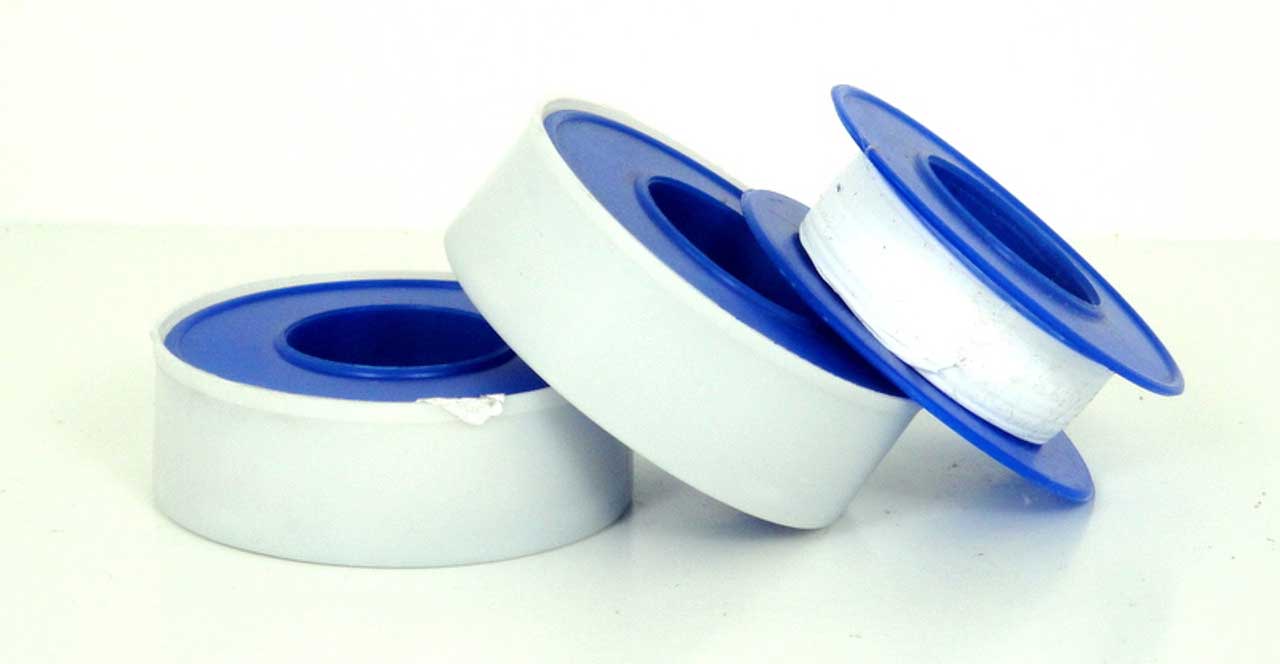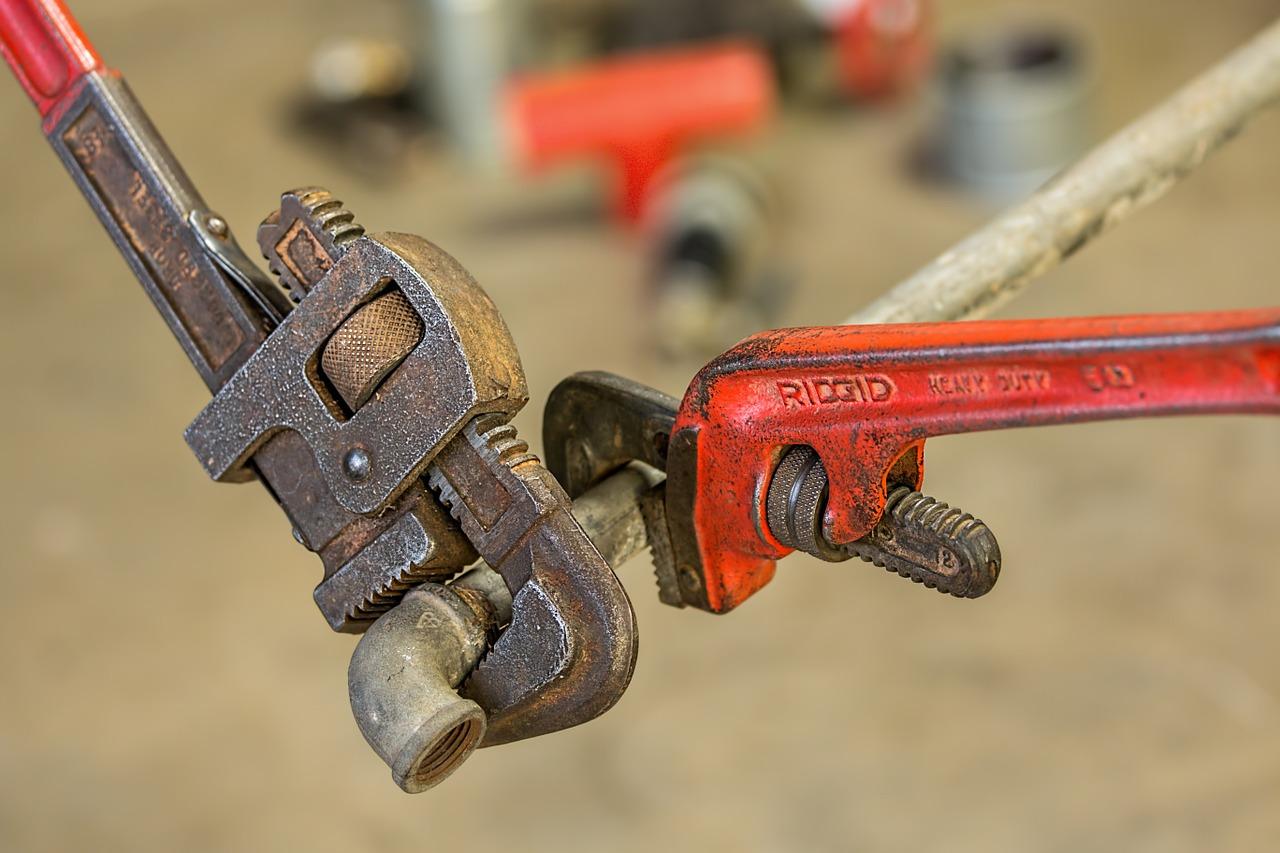Plumbers Tape 101: Everything You Need to Know
Plumber's tape has many uses. It can make projects more manageable and help ensure pipes are sealed properly and watertight. It is a thin yet powerful tape that ensures pipe joints are easy to manipulate without compromising a strong connection.
When choosing any tape, it is essential to understand how it works. If you think plumber's tape is a good fit for your project, then you will benefit from learning more about how this tape works and why it is a good choice for certain projects.
What Is Plumber's Tape?
Plumber's tape is made from polytetrafluoroethylene(PTFE). PTFE is a fluoropolymer. It is the same substance used on nonstick cookware and also used to make eyeglasses and razor blades. PTFE is nonflammable and nontoxic.
This product goes by various names, including "PTFE tape," after the material used to make it. It's also called Teflon tape, a brand name for PTFE.
Some people call it thread seal tape, plumber tape, pipe wrap tape, or seal tape because its most common application is to seal pipe threads in plumbing projects.
Plumber's tape has a unique construction with various characteristics that make it ideal for plumbing projects. The tape has no adhesive. It won't stick to the pipes, making it easy to remove. Nothing will stick to it either, so it will not be hard to undo a pipe connection for maintenance or repairs in the future.
This tape is very forgiving. It is shock-absorbent, resistant to water and chemicals, and handles high temperatures well. PTFE tape also is stretchy and malleable. The tape is an excellent choice when you want a watertight seal because it can conform completely to the threads in a pipe.
Its smoothness enables the male pipe end, the part with the wrapped and exposed ends, to easily and smoothly fit into the female end, the part with the threads on the inside. Once the pipes are fitted together, the tape fills in small gaps that would otherwise allow water to leak out.
Types and Sizes of Plumber's Tape
The default plumber's tape is white, but this product comes in other colors that will allow you to identify different pipes. For example, PTFE tape used on natural gas pipes is yellow instead of white, and green is used for oxygen lines and medical gases. By using color coding, people can quickly identify the type of pipes they are working with.
Color also designates the grade of the tape, as some jobs require a specific grade for safety reasons. So color coding is also a type of safety precaution. Using the wrong color could be a hazard in some situations because the wrong kind of tape might not work properly, and others may misidentify the pipe due to a wrong color.
The colors available include:
- White: Standard color for tape used in basic plumbing job. Comes in one density, for water pipes only.
- Yellow: Designates gas lines, such as natural gas, butane, and propane.
- Green: Used for oxygen lines. Grease and oil-free.
- Gray or silver: Used for stainless steel pipes. Very dense to prevent seizing.
- Red: For pipes with a diameter of 1/2 to 2 in and larger joints. Extra dense, sometimes labeled as pink tape because the packaging is red, but the tape looks more pink than red.
Standard pipe thread tape is usually 2.5 to 3.5 mil thick, which is very thin, about the thickness of a sheet of paper. Several tapes are thicker than standard white Teflon tape. For instance, the gray tape for stainless steel is about twice the thickness of the standard white tape. Pink or red tape is also more heavy-duty and has a higher density.
It is worth noting that the thickness of the tape will not change its basic properties. It retains its stretchiness and ability to easily tear without a tool.
Tape Jungle also offers some specialty types of PTFE tape, including:
PTFE Coated Glass Fabric Tape for electrical use
Skived PTFE Tape for mechanical applications
How Does Plumber's Tape Work?
Plumber's tape is different from other kinds of tape. For instance, tapes you may have used around the house have adhesive on one or both sides to seal or adhere two surfaces together. Plumber's tape is not sticky, but it works very well in plumbing projects to ensure a tight fit between two pipes when they join together.
This pipe wrap tape serves as a lubricant and sealant for the threads of the pipes. It is slippery but not sticky, and conforms to the spaces between threads. It works very well for ensuring a tight and secure connection yet allows for easy disassembly when needed.
This product not only seals and lubricates pipe threads but also helps reduce the risk of threads getting stuck, thanks to the smooth surface that acts as a buffer.

Steps for Using PTFE Tape
This product is fairly easy to use. Most situations will only require application by hand, but there are also dispenser machines available depending on the project and the amount of tape required. The tape breaks easily, so you shouldn't have to cut it with scissors. Just pull it tightly, and it should break.
The first rule of thumb for thread seal tape is to wrap it around the pipe in the direction the pipe turns. Otherwise, the tape could unravel or bunch up, causing an improperly sealed connection that will not be watertight.
Follow these steps to use plumber's tape properly:
- Make sure all parts of the fitting are clean and dry. Wipe down threads to ensure they are free of debris.
- Place the end of the pipe tape on the second thread from the end of the pipe and hold it still.
- Wrap the tape in the same direction the pipe will turn, making sure you pull it tightly around the connection you're trying to make. Tension will keep the tape in place since it doesn't have adhesive.
- Wrap the tape about two to four times. Be cautious about overwrapping, as this will actually defeat the purpose of allowing a tight connection due to excessive buildup.
- When the threads are sufficiently wrapped, tug the tape to rip it. Smooth out the end of the wrapped tape so it doesn't hang free and blends into the wrapped area.
Applications of Teflon Tape
Plumber's tape is commonly used by professionals in a variety of industries. You can also use it in do-it-yourself projects, which will help you get a professional finish that is attractive and functional.
As the name suggests, plumbing projects are the most common applications. These include:
- Pipe connections
- Shower heads
- Faucet connections
- Shower arms
- Valves and angle stops
- Toilet flush valve connections
- Garden hose tap
- Irrigation systems
- Threaded tub spouts
- Kitchen fittings
However, this tape also has applications in other fields beyond plumbing. For example, it can help tighten pipes in a radiator and the connections on a water heater. The auto industry also uses it often for fuel lines and joint connections on vehicles.
You can use this product for almost any situation where you want a tight fit between two parts that screw together. It will work under many different conditions due to its favorable characteristics.
Tips for Using Plumber's Tape
Using this product properly is the key to a good finish. There are some points to keep in mind that will help ensure your project goes smoothly.
- Be diligent in preparing the pipe. It must be free of any dust or water that could impair the ability to get a tight seal. If the tape cannot lay completely flat along the threads, it cannot work as intended.
- Make sure that you do not put the tape on the very end of the pipe connection. Leaving a couple of threads clean makes it easier to start the process of joining the pipes and helps increase the chances of a tight fit.
- Always apply it in the direction the pipe will turn. This will allow the tape to tighten and fill spaces as you turn the pipe. Doing this incorrectly could unravel the tape as you turn and prevent it from laying flat so it can do its job.
- Smooth out the end of the tape once you finish wrapping, and keep it flat to avoid bunching.
- If you end up with excess tape sticking out after connecting, make sure to test. This could be a sign of bunching. If you test and it is not leaking, just cut off the excess.
- As with any tape, you should store plumber's tape in a clean and dry area, avoiding extreme temperatures. However, keep in mind that since it has no adhesive to wear down, this product is incredibly long-lasting.
- Keep it on its roll. This tape comes in a two-part container that helps protect the tape. There is the roll portion that the tape wraps around and the housing that snaps over the roll. Never remove it from this packaging.
Common Mistakes and How To Avoid Them
When using thread seal tape, it is essential to avoid some common mistakes that could cause issues with leaks or create even bigger problems.
Once you apply the tape, tighten it normally. Do not overdo it. If the seal is not good, overtightening will only make it worse and could damage the threads.
If there is a leak, remove and reapply the tape. It comes off very easily, so this shouldn't be difficult. Be sure to pull it tight as you reapply, apply in the correct direction, and smooth the end.
It cannot be stressed enough that for this tape to work, you must apply it in the right direction. Most pipes will secure in a clockwise direction, which means you wrap in the direction hands on a clock moves: to the right. Another trick is to remember the saying, "righty tighty, lefty loosey." Right tightens something, while left loosens it.
A Note About Pipe-Joint Compound
If you apply the tape and notice there is still a bit of leakage despite trying to fix the application, consider using pipe dope in addition to the tape. Pipe dope or pipe-joint compound is a substance you can spread on the threads of a pipe for a tighter seal. It can be quite messy, so many people prefer using only tape. Still, sometimes doubling up on the tape and compound is the best solution.
If you want to use these items together, you will first wrap the threads with tape. Then, you can smooth on some compound. This is a great solution when a pipe may expand and contract (such as conducting heat), which may loosen the tape. The tape will stretch with expansion but will not contract.
Finding the Right Tape From Tape Jungle
No matter what project you're working on, make sure you choose the right tape. At Tape Jungle, we offer over 300 types of adhesive tapes and packaging supplies for every industry and application.
Most of our tape options can be adapted to whatever size or width you need, and we offer a variety of colors, thicknesses, and styles. We supply tapes for industries ranging from automobile to garment to aeronautical to hobbyist communities, like scrapbooking.
Our plumber's tape comes in different colors, densities, and widths to ensure you find just what you need to match the job you have in mind.
Contact Tape Jungle or visit our products page to view all of our industrial tapes for your next home project. Our helpful and knowledgeable customer service agents are waiting to assist you. Whether you simply wish to place an order or need help finding the best tape to suit your project, we can provide expert advice.
Additional Resources and References
If you want additional information about using and choosing PTFE tape, check out the following:


 Canadian Dollar
Canadian Dollar
